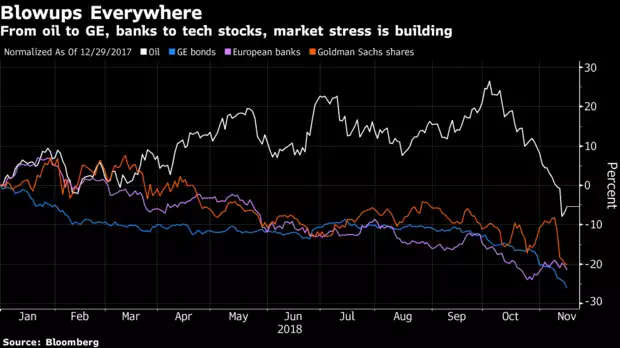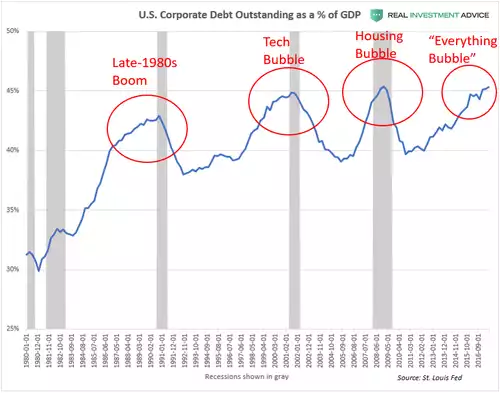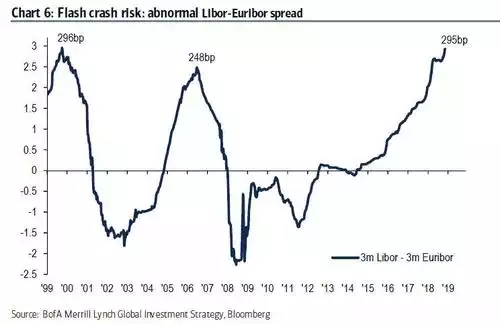“Flash Crash Risk” Nears Record High
News
|
Posted 19/11/2018
|
5736
Last week we wrote of the predictions we are on the cusp of the current and aptly named “everything bubble” bursting. It was largely based on technical signals and we will speak shortly of a highly correlated quantitative signal that is screaming sell right now. But first let’s explore the ‘everything’ in that current bubble and what’s happening now.
On Friday Bloomberg ran an article titled “‘Get Me Out’: Investors Sour on Market Strewn by Tape Bombs”. In the context of there normally being one sector in the market doing poorly Bloomberg noted:
“But when everything starts to go wrong at once, imaginations can run wild. Like now, when everywhere you look, something’s blowing up. In commodities, it’s the record plunge in oil. In equities, it’s six weeks of turbulence in the S&P 500. Debt markets have been rattled by the turmoil engulfing General Electric and PG&E. Bitcoin just plunged 13 percent. And Goldman Sachs, the storied investment bank, is having the worst week since 2016.”

Beyond those specifics, more broadly, unless you’ve been under a rock, you’ve seen big volatility in global sharemarkets, property under pressure in the big markets of the US and China, and of course here at home, the Eurozone struggling with Germany printing its first GDP contraction since 2015 (then prompting the ECB to start it’s QE program), and mounting concerns in the record high corporate debt sector after the GE scare. The list goes on…. GE has prompted a lot of focus on corporate bonds of late so let’s revisit just where corporate debt stands right now:

When the market is subject to so many individual scares the risks of course are broad scale contagion or more specifically the ‘unforeseen’ when two or more seemingly unrelated markets or participants combine to cause a broader collapse. The GE collapse has many drawing comparisons with Lehmans as the first of a domino effect of related and unrelated victims of a toxic system. From Bloomberg:
“The risk of contagion is understood. What’s not understood is where and how connected things are,” Malcolm Polley, who oversees $1.2 billion as president of Stewart Capital Advisors LLC in Indiana, Pennsylvania, said by phone. “Just about anything can create panic, create contagion, and it doesn’t have to be something that makes sense.
In the global nervous system connecting modern markets, the synapses are misfiring. It started a month and a half ago in stocks, when the Nasdaq 100 began a streak of falling in 22 of 30 days. Then oil began to reel, ripping off 12 down days for the longest streak ever. GE, already down 20 percent by mid-October, has seen its shares go from above $13 to below $8, while its bonds kept plunging Thursday. A tumble in Goldman lopped $12 billion from its market cap.”
In the context of the worsening Euro situation (particularly their banks), an interesting outlier maybe not on many radars is the relationship between Libor (the ‘international’ benchmark interest rate at which banks lend to one another) and Euribor (the equivalent for the Eurozone banks). Bank of America Merrill Lynch’s Chief Investment Officer, Michael Hartnett, just published the following chart which shows a near record high spread between the two of 295 basis points. As you can see clearly, we haven’t seen such heights since just before the dot.com crash and the GFC. He calls it the flash crash risk.

Proponents of “it’s different this time” will ignore this warning. Others will be repositioning in to safe haven assets and some cash around now….